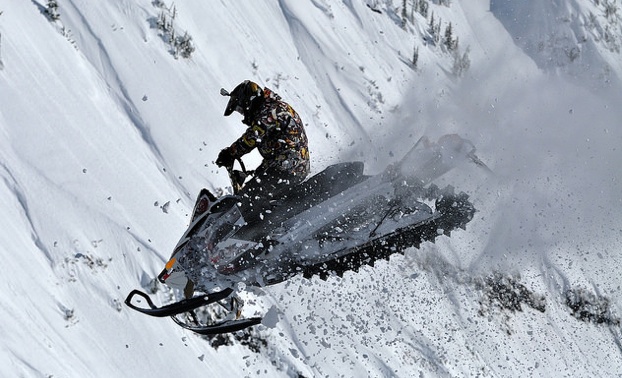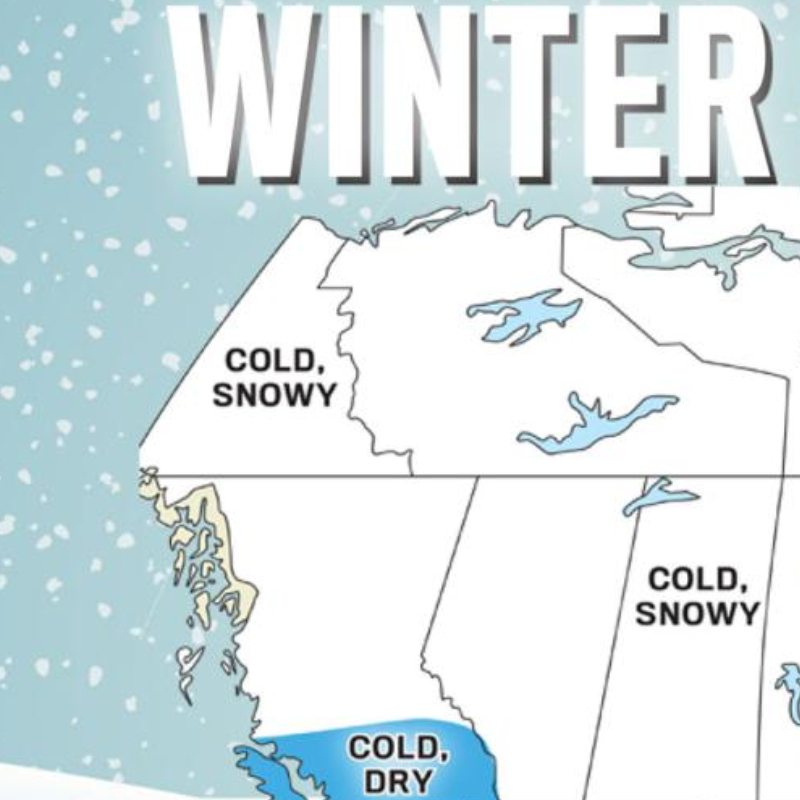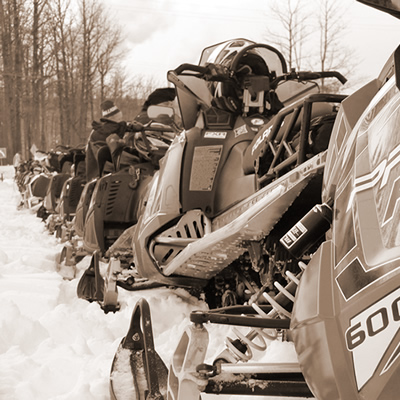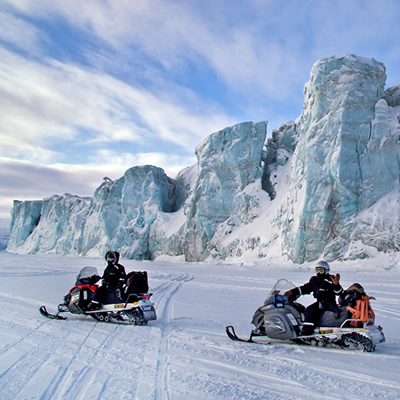At some point in every snowmobiler’s life comes the urge to fly. Jumping, hucking, launching, sending it—all are words that can describe this exciting, yet sometimes painful, activity. Myself, I love jumping. Landing, well, I’ve had to work on that part of it. Many a bruised knee and unexpected trip into my oh-so-solid handle bars have resulted from my lack of planning and understanding of exactly what was needed from a skills perspective when learning to jump.
Jeremy Hanke—snowmobile athlete, safety and skills educator, avalanche technician and curriculum specialist—was more than happy to lend some words of advice to all of the budding huckers out there. His words are respected in the snowmobile community and will most certainly save you frustration and physical pain if you are planning on learning to fly.
Safety gear is essential
When deciding to hone your skills as a jumper, you can be certain of one thing. You aren’t going to execute perfection right from the start. Chest protection such as Tek Vests and knee pads will inevitably become your best friend. Your knees will impact your sled at some point, or worse your running boards. Today's aggressive sharp tread for running boards can cut through outer and inner wear, exposing your knees and shins to injury. Be prepared. Neck braces such as EVS and Leatt are other components of safety gear that can prevent whiplash and other neck injuries if your landing doesn’t go as planned. Your safety gear will be used on your journey into jumping.
Plan your landing
“Planning your landing is the most important part of your jump selection. It can be compared to landing in a pool of water versus landing on a slab of concrete,” explained Hanke. Planning will make all the difference in the world when it comes to safety and execution.
Distance after landing is important
You will travel a fair distance after your jump so his rule of thumb is estimate twice the distance needed for landing for your run out. This will give you enough time to slow down and maintain control of your machine without the threat of trees, rocks or other obstacles that could potentially create a dangerous situation.
Slope
The term flat landing is exactly that. Landing onto a completely flat landscape can lead to injury. Many a broken back has resulted simply from riders landing flat. There must be some sort of declining slope to absorb your impact. The steeper the slope, the less impact you will feel.
Throttle and brake control
The throttle controls the pitch of the sled. If you push on the throttle, it will bring the nose of the machine up; the brake will bring the nose down. It takes time and practice to understand this balance, so start gradually and learn a light touch. A hand full of the brake will most certainly send you flying over the bars, and a hand full of throttle will send the machine into a tail stand, then catapult you over the bars, Jeremy said.
I know this move well, as my first reaction to fear was unfortunately squeezing my happy hammer when I was first learning the art of jumping. While it provided much entertainment for my family and income for my chiropractor, I eventually learned how to blip my throttle upon jumping rather than grabbing an entire handful. Momma’s got wings!
Landing
The ultimate goal is to land your machine level with the slope you are landing on to create a smooth, soft transition. Upon landing, use a little throttle to shoot you out of the bomb hole you’ve created.
The bomb hole is another key point often overlooked. If you are having fun with friends and learning to jump or drop, stagger your attempts so as not to land in someone else’s bomb hole. It is much nicer to land in fresh snow than in the crater created from previous jumps.
Take your time to learn
Much practice and patience need to be executed when learning to jump or drop. Skills take time, so gradually increase the size and velocity of your jump attempts. Those who succumb to peer pressure will find themselves in a situation that could potentially be deadly. Jumping and dropping are both skills that need time to be developed. It is not as simple as speed or guts. It is not a demonstration of courage to simply toss yourself off a cliff or jump.
Do it right the first time, and have patience with your skills development. Your body will thank you for it!







